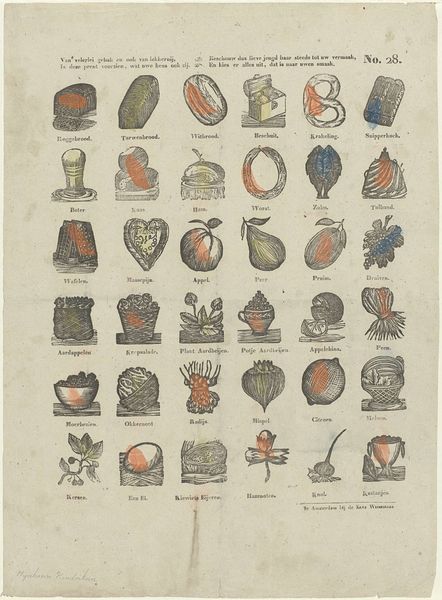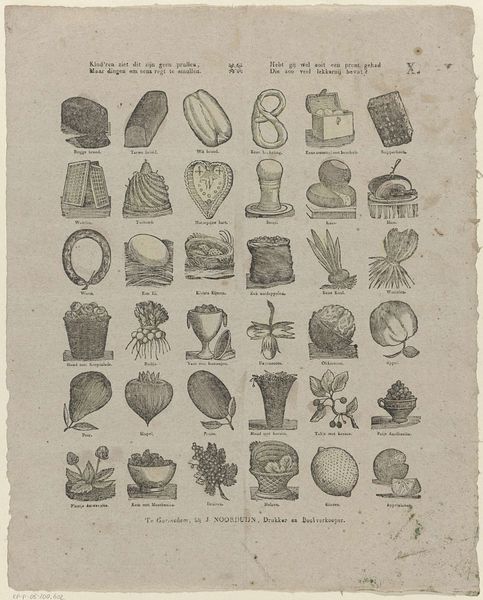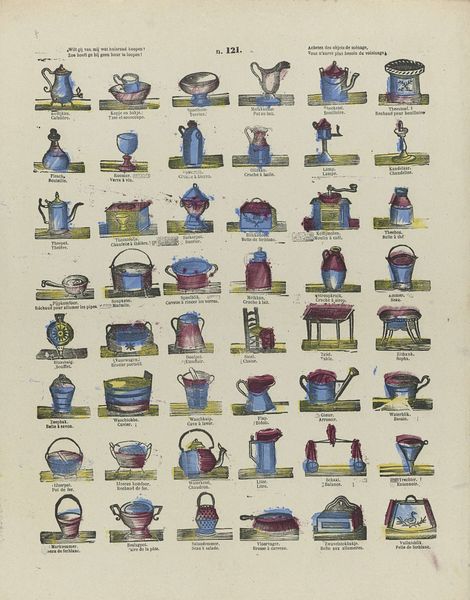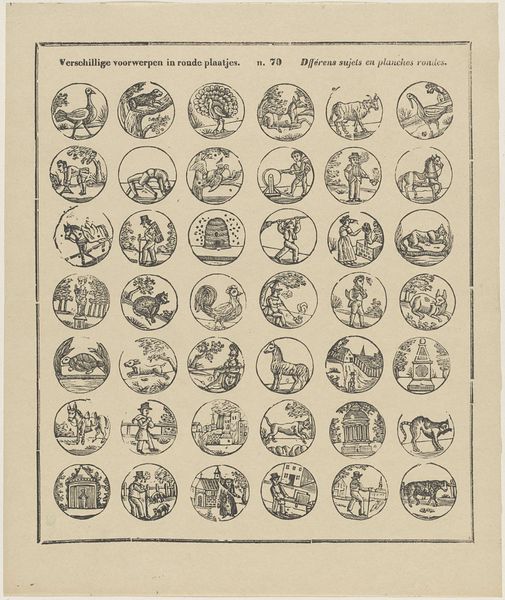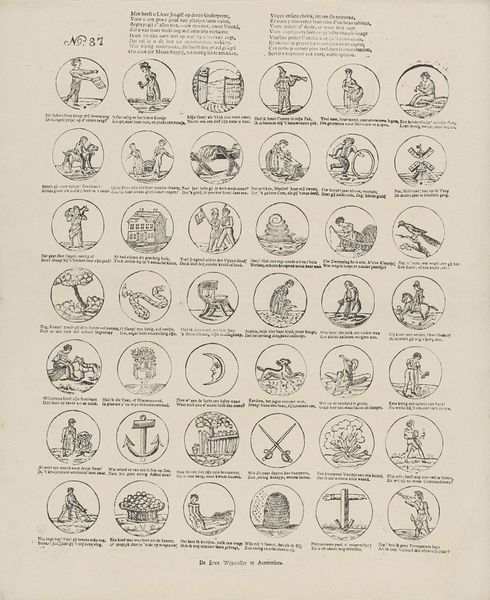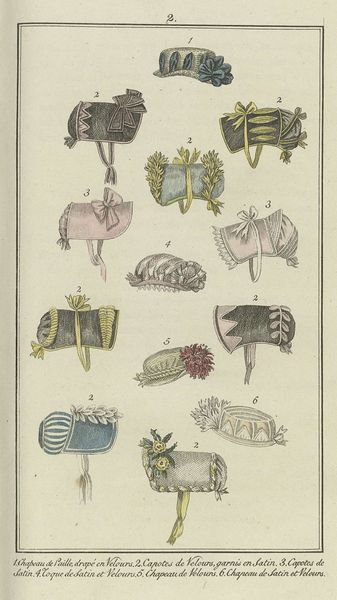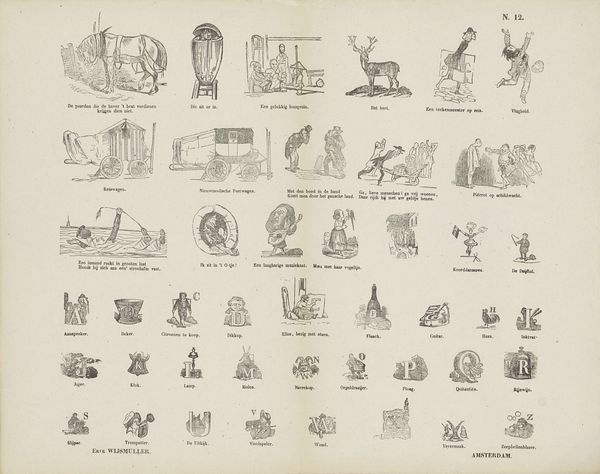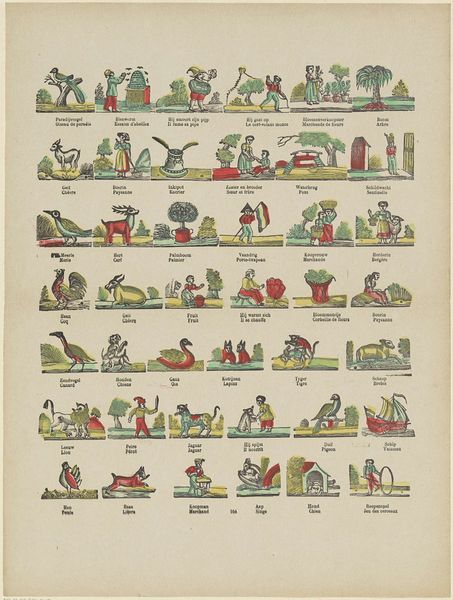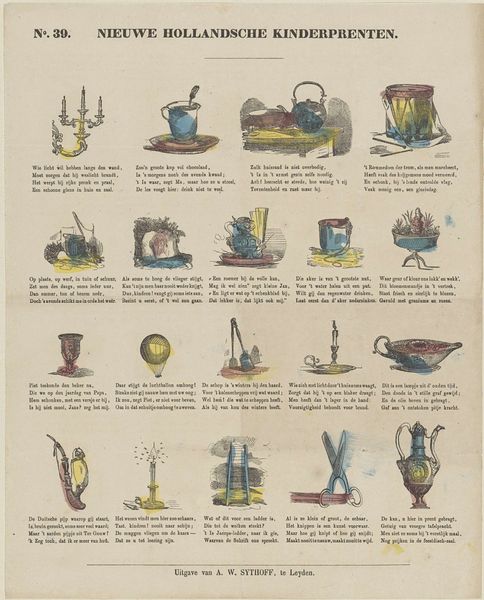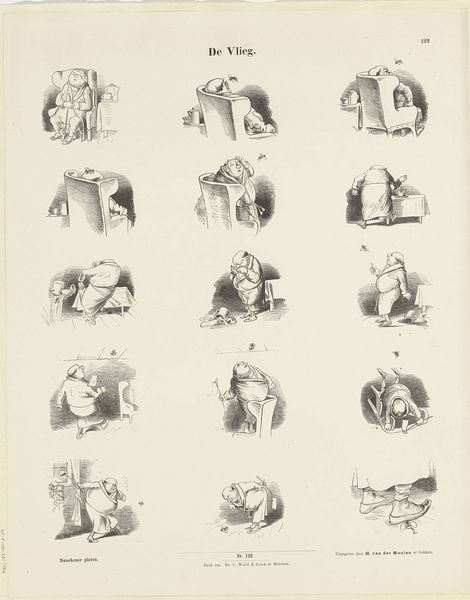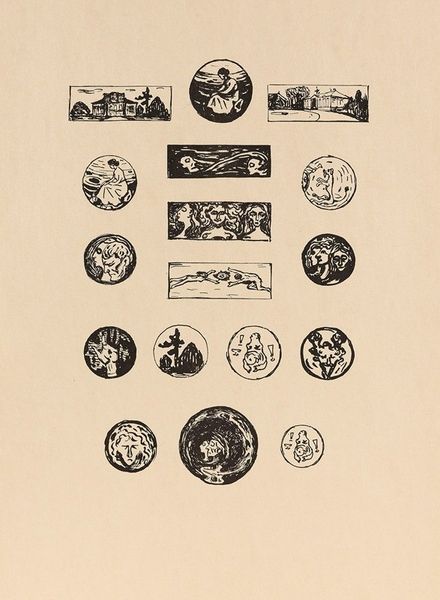
Van velerlei gebak en ook van lekkernij, / Is deze prent voorzien, wat uwe keus ook zij, / Beschouw dus, lieve jeugd, haar steeds tot uw vermaak, / En kies er alles uit, dat is naar uwen smaak 1848 - 1881
0:00
0:00
lutkiecranenburg
Rijksmuseum
drawing, painting, watercolor
#
drawing
#
painting
#
watercolor
#
fruit
#
watercolour illustration
#
genre-painting
#
academic-art
#
watercolor
Dimensions: height 390 mm, width 317 mm
Copyright: Rijks Museum: Open Domain
Curator: Welcome! Before us hangs an intriguing watercolor and drawing, made sometime between 1848 and 1881, by Lutkie & Cranenburg. It’s titled "Van velerlei gebak en ook van lekkernij, / Is deze prent voorzien, wat uwe keus ook zij, / Beschouw dus, lieve jeugd, haar steeds tot uw vermaak, / En kies er alles uit, dat is naar uwen smaak". Quite a mouthful! Editor: It definitely looks like a page torn from an old catalogue. All those slightly crude, yet charming renderings of food… and odd colours! I’m curious about the materiality of the pigments. Are we certain it’s watercolor? Curator: Indeed. The medium and subject matter point to a specific didactic purpose. This would have likely been printed and used to educate children—particularly those in well-to-do households familiar with genre painting, in vocabulary or maybe even for artistic training. Note the academic art style evident in the precise delineation. Editor: So, not just decoration but almost like... occupational training. Given the limited colour palette—mostly reds, blues, and yellows—did they perhaps economise in the printmaking, to broaden accessibility for less affluent pupils? Were they readily available, and therefore culturally disposable? Curator: That’s a fascinating point. The relatively limited use of pigments speaks to production costs. It also hints at the democratization of art education during that era, attempting to reach a broader public through mass production while upholding values of taste and skill. These may have originally appeared in periodical publications designed to educate and entertain. Editor: Looking closer, I can't shake the feeling that some illustrations have very little detail, suggesting a quicker application and lower level of craft, whilst others feature great control. Maybe there was a workshop employing workers of various experience, producing educational goods for increasingly niche markets? Curator: That’s a smart reading. The division of labour inherent in a workshop environment might have translated into variations in the artworks themselves, and into this specific drawing. It adds another layer to understanding both production and reception. Editor: Well, it certainly challenges notions of ‘high art,’ doesn't it? It emphasizes material conditions of artmaking rather than individual genius. Food itself, as rendered form, provides an immediate connection. It democratizes image, inviting viewers to engage without elitist artistic pretensions. Curator: Precisely. And by understanding its production, we understand not only art-making processes but also education in the 19th century. Editor: I appreciate knowing it beyond just the face value, the socioeconomics of creation adds another flavour. Curator: Absolutely. It really is quite interesting!
Comments
No comments
Be the first to comment and join the conversation on the ultimate creative platform.

